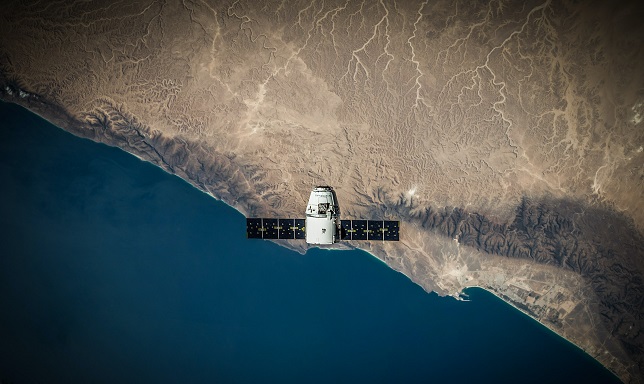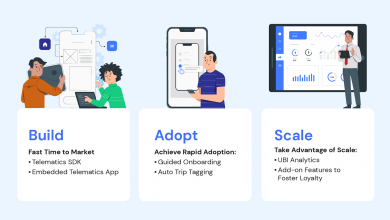Location Services – Overview of Technology Landscape

The importance of assessing the exact location of vehicle is becoming profound due to the plethora of location based services being offered that serves both industry and consumer use cases. As per analysts, the worldwide location based services market across industry verticals is expected to be more than 200B USD by 2029 growing at a CAGR of more than 15% with Automotive segment having a major share. The capability to map the exact location of a vehicle opens a window of opportunity for the Automotive OEMs to provide better customer experience, optimize their OPEX and open additional revenue streams. A few examples of location based use cases are navigation services, concierge services, location based promotions, anti-theft, secure fleet management and many others. The primary input to these use cases is the raw location information of the vehicle made available through multiple technology enablers. The focus of this article would be to have a quick overview of these technology enablers
While there are many location technology enablers, this article is going to focus on satellite based and network based methodologies. The expected location accuracy would be use case specific. It is important to understand that the location accuracy can be improved by combining the above mentioned location technologies
- Satellite Based – There are many constellations of satellites that broadcast data for positioning, navigation, and timing, which is used for location measurements. These constellations of satellites are called GNSS or Global Navigation Satellite systems.
Today there are four main GNSS constellations with global coverage, i.e., GPS from the United States, GLONASS from Russia, GALILEO from European Union and BEIDOU from China. In addition to that there are 2 regional GNSS constellations, namely QZSS from Japan and NAVIC from India. These satellite constellations are managed by the respective countries and each of them provides different levels of location accuracy (in the range of a few meters). A GNSS not only comprises of the satellite constellation orbiting the earth, but also has 2 other key components, namely control stations and positioning equipment. A network of control stations on earth’s surface are responsible for monitoring the satellite as well as provides a location accuracy baseline. The positioning equipment that receives the time and orbital data from the satellite are responsible to provide the actual location of itself. One important thing to note is that the satellite data are prone to error caused by multiple reasons, for which there is a high reliance on corrections services like SBAS or Satellite Based Augmentation Systems. These correction systems are very important in getting high accuracy location information using GNSS
- Network Based – In addition to satellites, intelligence from cellular and non-cellular networks (like Wi-Fi, LORA, etc.) can also provide high location accuracy of a device. Although there are legacy positioning methodologies used in the era of 2G/3G networks, this segment will talk about the positioning methodologies in LTE and how these are enhanced in 5G networks. The positioning methodologies in LTE networks are as follows:
- Assisted GNSS – The low bandwidth of a satellite signal causes long delays in downloading satellite data and in some cases the collection needs to start from scratch in case the satellite signal is poor or is lost. Assisted GNSS is a solution to this specific problem where the satellite data is fetched by a Assisted GNSS enabled device from the Assisted GNSS server (which stores the cache database of the satellite data) using the high bandwidth cellular and non-cellular network. The Assisted GNSS server infrastructure is deployed and managed by the network operator. The location accuracy ranges between 10 to 50 meters
- Enhanced Cell ID (ECID) – This technique amplifies the location accuracy of cell-ID based positioning by considering two additional attributes, namely RTT (round trip time of the signal between the device and the base station) and AOA (Angle of Arrival of the signal between the device and the base station). Cell ID based positioning estimates the location of the device in reference to the base station to which it is latched on to. However, location accuracy is poor especially when cell radius becomes larger for example in rural areas. RTT helps to estimate the distance of the device from the base station, whereas AOA helps to estimate the direction of the device from the base station. So RTT and AOA improves the location accuracy in ECID. However, the location accuracy using ECID is poor as compared to Assisted GNSS, where ECID provides a location accuracy of around 150 meters
- Observed Time Difference of Arrival (OTDOA) – The technique is based on the device calculating the time difference between the downlink signals received from 2 or more base stations. With the knowledge of the base station location and the measured time difference, the device location can be easily estimated. The location accuracy ranges between 50 to 200 meters
With the advent of 5G networks, we can see significant enhancements to the location accuracy provided by the LTE networks. Following are some of the technology elements in 5G network which promises to provide a location accuracy of up to a few meters:
- Beamforming – This is a signal processing technique that allows directional transmission and reception of signals. While in LTE the base station can estimate the sector of a cell where the device is located, beamforming provides greater location accuracy as it slices the base station transmissions into multiple spatial components which are few degrees apart. Also, with beamforming antennas having a 2D structure, the positioning methodology gains the dimension of vertical axis as well
- Higher Frequency – This would increase the beamforming resolution which would translate in greater 2D location accuracy
- Higher Network Density – Considering the limited coverage of millimeter wave frequencies which are used in 5G networks, the 5G network planning would be significantly denser as compared to LTE. With such dense network infrastructure where the device will have a direct line of sight with the radio infrastructure, the location accuracy would significantly improve
The positioning methodologies described above helps to estimate the precise location of the device. However, translating the location information into a tangible use case would require the role of the application layer which consumes the location information of the device. This is where comes the role of location based services (LBS) which essentially is a software based service. On a broad level the LBS can be categorized into the following segments relevant from Automotive standpoint – Navigation Services, Tracking Services (traffic information, vehicle tracking), Infotainment Services (city guide, tourist information) and other Value Added Applications like location based advertising. With a promising growth in the connected vehicles segment, there will be sharp demand in these services which will further fuel the need of greater location accuracy. This business rationale of greater location accuracy would justify the technology investment in coming up with more accurate positioning technologies.
Author:

Tirthankar Guha
IoT Go to Market Manager
Ericsson
Tirthankar is the Go to Market Manager at Ericsson for the IoT Connectivity portfolio based in Montreal, Canada. He is responsible for driving the global Go to Market strategy for some of the key offerings within Ericsson’s IoT Connectivity portfolio towards Ericsson’s CSP Partners and Enterprise Customers across different industry verticals. Tirthankar has more than 18 years of experience in the telecom industry spanning across different market areas across the globe.
Published in Telematics Wire


